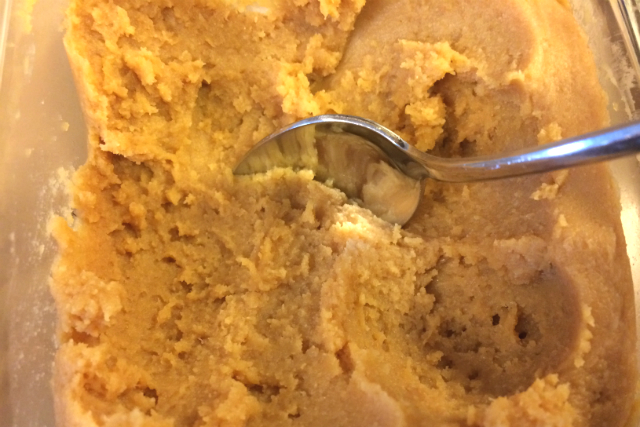Miso Sesame Noodles Adventure
We’d already punted on lunch by going out to eat. And, well past dinnertime on a weeknight, grocery shopping felt overwhelming. While debating picking up a pizza, we peered into the fridge.
Despite our need for essentials, the fridge looked full. This is ridiculous, I thought, before spotting the sizable tub of white miso paste.
I’d recently bought white miso paste for the first time to go in a vegan recipe in development. We drove to an Asian grocery store, combed the aisles for miso, and came up empty. I stood next to our cart while Guillaume went off to inquire. Where could the containers be? After a few minutes, I spotted him at the other end of the store, in the refrigerated section, under a giant “miso” sign.
Miso has a very long history. It’s traditionally made in Japan from fermented soybeans and the white miso paste has a sweet umami flavor. I got a fish-free kind. After using a mere tablespoon of the magic stuff, I searched “What can I do with white miso paste?” and a bunch of recipe lists popped up.
Some went into my improvised Korean-style seafood broth with rice cakes, fish cakes, and scallions. Then I remembered bookmarking Bon Appetit’s cold miso sesame noodles recipe, which looked tempting even though we still had snow on the ground.
For lunch one day, I prepared a two-person version with some tweaks. We only had an English cucumber and no Fresno chile so a dash of red pepper flakes at the end had to suffice. The result was okay, but I felt that the whole thing could be zippier.
Now, desperate for dinner, it was time to try again. I gambled on adding some young kimchi, which has a brightness we enjoy. Guillaume took the lead on preparing the sauce and chopping the kimchi. The original recipe calls for raw garlic grated on a microplane, but neither one of us particularly enjoys raw garlic. Adding garlic powder and a bit of ground ginger worked.
Guillaume gallantly chops kimchi for the dish.
Happily, the kimchi didn’t overpower the dish. It added crunch and heat, but we could still taste the miso, lime, and other flavors. With vegetarian kimchi, you could turn this into a vegan meal.
We’ve tried the dish with regular spaghetti, rice noodles, and udon noodles. The udon noodles were our favorite, plus they came in a convenient 8-ounce package. All three noodle types work well, though.
A quick note about white miso paste: Asian grocery stores usually have the best selection and the best prices. Check the ingredients if fish products are a concern. If you only have red miso paste on hand, be careful about the salt level because my understanding is that red miso tends to be much saltier to start.
Cold Miso Sesame Noodles with Kimchi
Serves 2
Around ⅓ of an English cucumber OR most of a Persian cucumber
2 Tbsp. fresh lime juice
¼ C. white miso paste
2 tsp. toasted sesame oil
2 tsp. light brown sugar
Garlic powder
Ground ginger
About 3 Tbsp. neutral vegetable oil
Around 1 tsp. water
Salt
8 oz. dried rice noodles, dried udon, or dried spaghetti
About 1 C. kimchi (approximately 6 oz. by weight)
2 lime wedges
Sesame seeds, for serving
Boil a pot of water (add salt if using regular spaghetti). Prepare the noodles according to the package directions.
Cut the English cucumber into thin slices on a mandoline OR cut the Persian cucumbers into thin half-moon shapes. Chop the kimchi into bite-sized pieces.
Add 2 Tbsp. fresh lime juice to a medium-sized glass mixing bowl. Add the miso paste, sesame oil, brown sugar, and whisk with the lime juice until smooth. Sprinkle in a little garlic powder and ground ginger. Whisk to combine.
Slowly stream in the vegetable oil while whisking constantly until the mixture is smooth and thick. Add a splash of water — around a teaspoon — and whisk together. The dressing should have the consistency of heavy cream.
Drain the noodles, rinse thoroughly with cold water to cool, and drain again for a few moments. Add the noodles to the dressing and toss with tongs to coat. Season with salt — fine to taste slightly too salty because the vegetables will balance out the flavor.
Add the kimchi and cucumber slices. Use tongs to mix the vegetables into the noodles.
Divide into two large bowls and sprinkle with sesame seeds. Squeeze a lime wedge over each one to serve.



